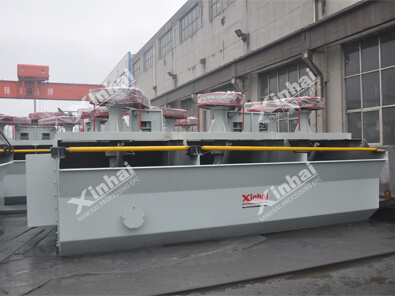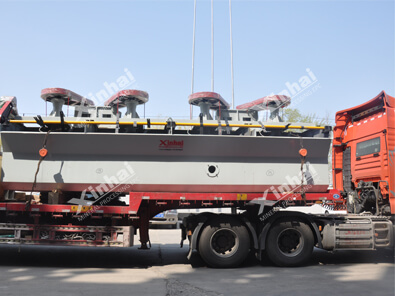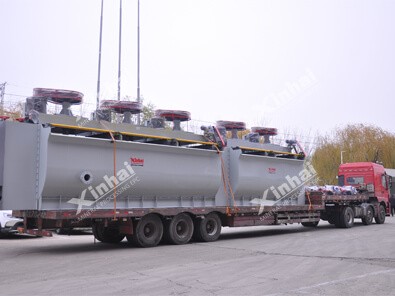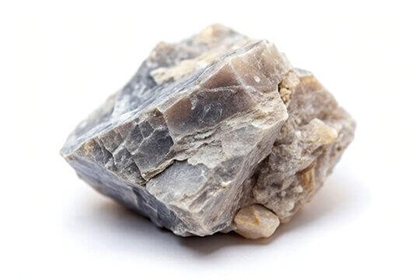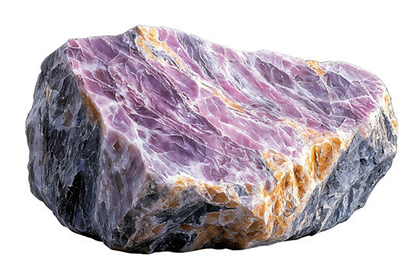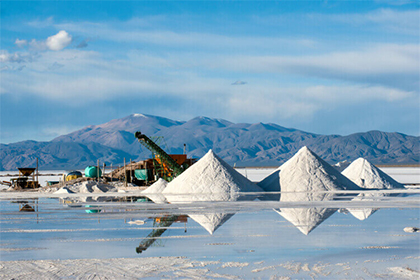Lithium Ore Process Flow | How is Lithium Ore Processed?
 Laura
Laura
 Sep 28, 2022
Sep 28, 2022
 764
764
If you want to know more details about equipment, solutions, etc, please click the button below for free consultation, or leave your requirements!

In recent years, the new energy market is promising, and the demand for lithium, nickel and other battery metals has risen significantly. The development and utilization of lithium ore has become the focus of attention. Lithium ore beneficiation process includes crushing and screening, grinding and classification, separation, concentrate dewatering and other stages, which we will introduce one by one in this article. Let's start!
01 Lithium Ore Process Introduction
BackLithium ore beneficiation process mainly includes crushing, grinding, separation and so on.
Crushing, is to change the large pieces of lithium ore into small pieces, in order to meet the requirements of the next process on the size of lithium ore, according to the size of crushing can be divided into coarse crushing, medium crushing and fine crushing.
Grinding, is in the mechanical equipment, with the medium (steel ball, steel bar, gravel) and the impact of the mineral itself and grinding and stripping effect, so that lithium ore in the vein minerals to achieve maximum dissociation, in order to provide the particle size of the next beneficiation process requirements of the material.
Separation. mainly refers to a certain beneficiation method, so that the useful minerals in lithium ore and vein minerals and different useful minerals are separated from each other, and enrich the operation respectively. The products after separation are lithium ore concentrate and lithium ore tailings.
02 Lithium Ore Beneficiation Process Principle
BackThe use of mineral surface physicochemical properties of the difference to separate the mineral beneficiation method.
Lithium ore beneficiation industry is widely used in froth flotation, which is characterized by the useful minerals selectively attached to the air bubbles in the pulp, and subsequently float to the surface of the pulp, to achieve the separation of useful minerals from the vein.
Before lithium ore beneficiation, the ore should be ground to the size required for flotation, so that the lithium ore basically reaches monomer dissociation for separation, and flotation chemicals are added. During flotation, air is introduced into the pulp to form a large number of bubbles. So the particles that are not easily wetted by water, which are usually called hydrophobic minerals, attach to the bubbles and float up to the surface of the pulp with the bubbles to form a mineralized froth layer. While those particles that are easily wetted by water, which are usually called hydrophilic minerals, cannot attach to the bubbles and remain in the pulp. Finally, the mineralized bubbles are discharged, that is, to achieve the purpose of separation.
Generally, the useful minerals are floated into the froth products, and the vein minerals are left in the pulp, which is usually called positive flotation. But sometimes the vein minerals float into the froth products, leaving the useful minerals in the pulp, this flotation is called reverse flotation. If the lithium ore contains two or more useful minerals, there are two flotation methods. One is called priority flotation, that is, the useful minerals are selected one by one as a single concentrate; the other is called mixed flotation, that is, the useful minerals are selected as a mixed concentrate, and then the useful minerals in the mixed concentrate are selected one by one to separate
03 Lithium Ore Process Flow
Back#1 Lithium Ore Crushing Process
The lithium ore blocks mined from the mine are large. The maximum size of the open pit mining blocks is 1000mm~1500mm, and the maximum size of the lithium ore blocks from underground mining is 300mm~600mm block size, such large ore cannot be directly separated. Because the useful lithium ore and useful minerals, lithium ore and vein minerals in it are closely symbiotic.
In order to make them separate from each other, that is, to achieve a monolithic separation state. So after the lithium ore is sent to the beneficiation plant, the ore must first be crushed to a certain size, and then sent to the mill for grinding. The type of crusher used in the lithium ore processing plant depends mainly on the nature of the ore, the capacity of the lithium ore processing plant and the size of the crushed product, etc.
Coarse crushing of lithium ore is generally done with jaw crushers or gyratory crushers. Medium and fine crushing mostly use standard and short head cone crushers, and in a few cases, roller crushers are also used for crushing. For processing loose lithium ores, impact crushers (such as impact crushers and hammer crushers) are generally used for crushing.
#2 lithium Ore Screening Process
The process of separating loose lithium ore into different particle sizes through a screen is called screening In lithium ore processing plants, screening is mostly combined with crushing operations.
Before the lithium ore into a section of the crusher, pre-separating particle size has met the requirements of qualified products, this screening is called pre-screening. It can prevent the lithium ore from being over-crushed and also increase the productivity of the crusher. When the lithium ore contains high moisture and powder ore, it can also avoid the blockage of the crusher.
After the ore has been crushed by the crusher, the screen is applied to check the particle size of the crushed product so that the unqualified oversize lithium ore particles return to the crushing operation and are crushed again, and this screen is called check screen. It can make full use of the crusher's capacity.
#3 Lithium Ore Grinding Process
Grinding is the continuation of the lithium ore crushing process, the purpose of which is to make all or most of the various useful mineral particles in the ore to achieve monolithic separation, so that the separation can be carried out and its particle size meets the requirements of the separation operation.
Lithium ore grinding operation is usually carried out in the mill, the cylinder is generally equipped with grinding media, such as steel balls, steel rods or gravel, etc.. The mill with steel balls (or iron balls) is a ball mill; the mill with steel rods is a rod mill; the mill with gravel is a gravel mill. If the mill is not equipped with other media, it is called a media-free mill or self-mill; the self-mill with the right amount of steel balls constitutes the so-called semi-self-mill. The specifications of the mill are expressed by the diameter of the cylinder multiplied by the length.
Lithium ore grinding operations are mainly wet grinding, and generally form a closed circuit with a mechanical classifier, using the media to impact and grind the lithium ore.
#4 Lithium Ore Classification Process
In a spiral classifier, the process of separating lithium ore materials into several particle size classes according to their different settling speeds is called classification.
The purpose of classifying and screening is the same, both of them are to divide the ore grain group into different size levels, but their working principle and the size characteristics of the product are different. Screening is strictly based on geometric size (screen hole size), while classification is based on their different settling rates in the media.
In lithium ore grinding operation, classification operation is usually used with it in order to separate the materials with qualified particle size in time, which can avoid over-grinding of products and improve grinding efficiency.
The classifying equipment used in lithium ore processing plant grinding operations are mechanical classifier and hydrocyclone.
The most used mechanical classifier in the beneficiation plant is the spiral classifier. In order to reduce the over-crushing present in the grinding process, the screen is often used to form a closed circuit with the rod mill.
#5 Lithium Ore Flotation Process
Lithium ore flotation is a beneficiation method that uses the difference in physicochemical properties of mineral surfaces to separate minerals. Froth flotation is widely used for lithium ores and is characterized by the selective attachment of ore particles to air bubbles in the pulp and the subsequent upward floating to the surface of the pulp to achieve separation between lithium ore and vein minerals or useful minerals.
Lithium ore flotation process generally includes the following operations.
(1) Lithium ore fine grinding, so that the useful minerals to achieve dissociation. This operation is usually done by a mill with a classifier.
(2) Adjustment of the lithium ore slurry concentration to suit the flotation requirements. In most cases, the pre-flotation classification overflow concentration meets the flotation requirements, so this operation can be omitted.
(3) Lithium ore flotation slurry dosing treatment. This operation is generally carried out in the agitation tank, in addition to the separation of inflatable flotation and mineralized froth. It is carried out in the flotation machine.
(4) The first flotation operation of lithium ore slurry after dosing is usually called roughing.
In the lithium ore roughing mineralized froth, although enriched with a large amount of lithium ore, but often mixed with vein minerals and other impurities, usually also to this roughing mineralized froth for one or more times re-election, this roughing froth for re-election operations called selection. The froth product from the last selection operation is called lithium ore concentrate.
In the pulp discharged from the roughing operation, there is often a certain amount of lithium ore remains, which needs to be re-elected for recovery, this re-election operation is called sweeping. The slurry discharged from the selection operation and the sweep product processing operation. The froth product obtained from the operation is usually called medium ore. Medium ore is usually returned to one of the previous flotation operations for re-election, or in special cases, can be flotation alone. Rougher separation is generally a single operation, and there can be multiple operations for selection and sweeping. The slurry discharged from the last sweeping operation is called tailings.
General lithium ore flotation is to float the lithium ore into the froth product, leaving the vein minerals in the pulp, such a flotation process is called positive flotation. Conversely, the flotation process in which vein minerals are floated is called reverse flotation.
#6 Lithium Concentrate Dewatering process
Lithium concentrate mainly consists of concentrate dewatering and tailings treatment.
Concentrate dewatering usually consists of three stages: concentration, filtration and drying.
The water content of lithium concentrate is one of the criteria to measure the quality of the concentrate.
Wet beneficiation results in a lithium concentrate that contains a significant amount of water, which is unsuitable for direct use of the lithium concentrate or for further processing (e.g. smelting). Moisture in lithium concentrates also makes transportation and handling difficult and increases transportation costs. In areas where water is scarce, it is even more important to recover water from the beneficiation products (concentrate and tailings) for reuse (return water) to reduce the consumption of fresh water.
The process of removing water from lithium concentrates is called dewatering. The main methods of lithium concentrate dewatering are natural drainage, concentration, filtration and drying. Dewatering of coarse-grained materials is relatively easy and generally uses the natural drainage method, i.e., using the gravity of water itself to drain out. However, the dewatering process of fine-grained materials by natural drainage is not only slow, but also the fine-grained or fine-mud materials will be lost with water.
Therefore, the dewatering of fine-grained lithium concentrate is more complicated, and it is generally completed in several stages.
#7 Lithium Ore Tailings Treatment Process
After lithium ore has been separated, there will be a large amount of tailings generated, and the amount of tailings from large processing plants that deal with poor ore will be even larger. The concept of lithium ore tailings is relative, which often also contains lithium ore beneficiation technology level temporarily can not recover the useful components. Therefore, in order to comprehensive use of national resources and eliminate the pollution of the tailings to the environment, lithium ore beneficiation plant should have a planned treatment and storage of the tailings produced. And to strengthen the research on the comprehensive utilization of tailings, turning waste into treasure and harm into benefit. Lithium ore tailings treatment usually includes three aspects: storage of tailings; reuse of tailings water; purification of tailings water.
04Summary
BackThe lithium ore beneficiation process is mainly used for lithium pyroxene, leaf feldspar and lithium mica, which are three lithium-containing minerals. The main minerals containing lithium can be selected by flotation, so flotation is an important beneficiation method for lithium ore. However, in the actual beneficiation application, we have to analyze the specific problems and choose and design the most suitable beneficiation process to carry out the beneficiation operation.
Welcome to click chat button to learn more.
 +86 18716000713
+86 18716000713 xlyin@xinhaimining.net
xlyin@xinhaimining.net




 Message
Message Chat Now
Chat Now


